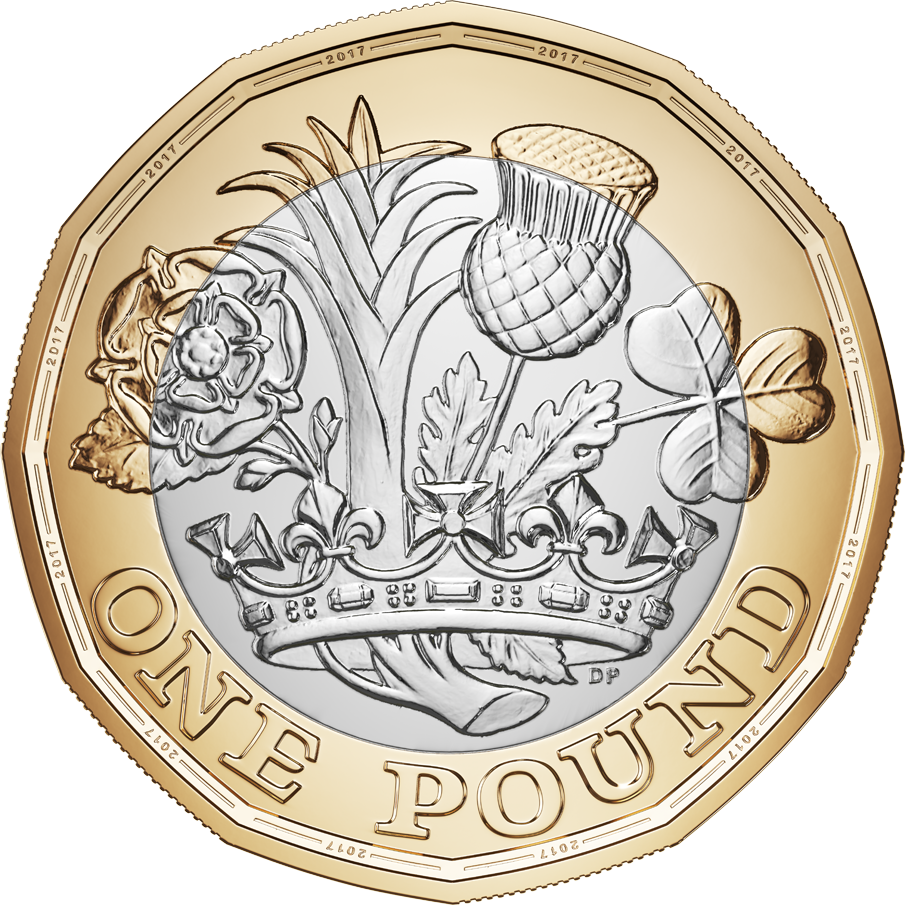
The current £1 coin is being replaced for the first time in over 30 years because of its vulnerability to sophisticated counterfeiters.
Approximately one in thirty £1 coins in circulation is a fake and that is why the Royal Mint are introducing a new, highly secure coin on 28th March this year, to reduce the costs of counterfeits to businesses and the taxpayer.
The new pound coin will be the most secure coin in the world as it has a number of features that make it much more difficult to counterfeit.
Following the introduction of the coin, there will be a six month period when the current £1 coin and the new £1 coin are in circulation at the same time. The current £1 coin will be demonetised on 15th October 2017.
For starters, it will have 12 sides, making it a distinctive shape that is instantly recognisable, even by touch.
The coin will be ‘bimetallic’ i.e. made of two metals. The outer ring will be gold coloured (nickel-brass) and the inner ring will be silver coloured (nickel-plated alloy).
When the coin is seen from different angles, it will display an image like a hologram that changes from a ‘£’ symbol to the number ‘1’. Micro-lettering, milled edges and a hidden high security feature will also be built into the coin to protect it from counterfeiting in the future.
The coin’s design reflects the United Kingdom’s heritage and superb craftsmanship. Made by The Royal Mint – the coin will be produced using cutting-edge technology, developed in South Wales.
Featuring a new design that shows the English rose, the Welsh leek, the Scottish thistle and the Northern Irish shamrock emerging from one stem within a royal coronet, it was created by David Pearce who won a public design competition at the age of 15.
The fifth coinage portrait of Her Majesty the Queen, designed by Royal Mint coin designer Jody Clark, will also feature on the coin.
If you have any further queries please email: newonepoundcoin@royalmint.com
Important dates
October 2016 to 27 March 2017
Preparing for the new £1 coin
- Check whether you operate equipment that handles the £1 coin.
- Contact your equipment supplier to find out if you need adaptations or replacements and by when.
- Make the changes to your coin handling equipment.
- Train your staff on the features of the new £1 coin.
- Consider any changes to your cash handling processes e.g. counting, storing and banking during the co-circulation period.
28 March to 15 October 2017
Co-circulation period
- You can accept both coins from your customers.
- Your equipment may be able to accept or dispense both £1 coins or just one. Please check with your equipment suppliers.
- You will need to tell your customers which coins your equipment can accept.
- You should make arrangements with your bank or cash in transit (CIT) provider to return the current £1 coin and new £1 coin in separate packaging.
16 October 2017 onwards
Demonetisation
- All your coin handling equipment should be able to accept the new £1 coin.
- You are under no obligation to accept the round £1 coin from your customers and you should not distribute the round £1 coin.
- The round £1 coin can continue to be deposited into a customer’s account at most high street banks and the Post Office.*
*check with your bank for more details, including deposit limits.













